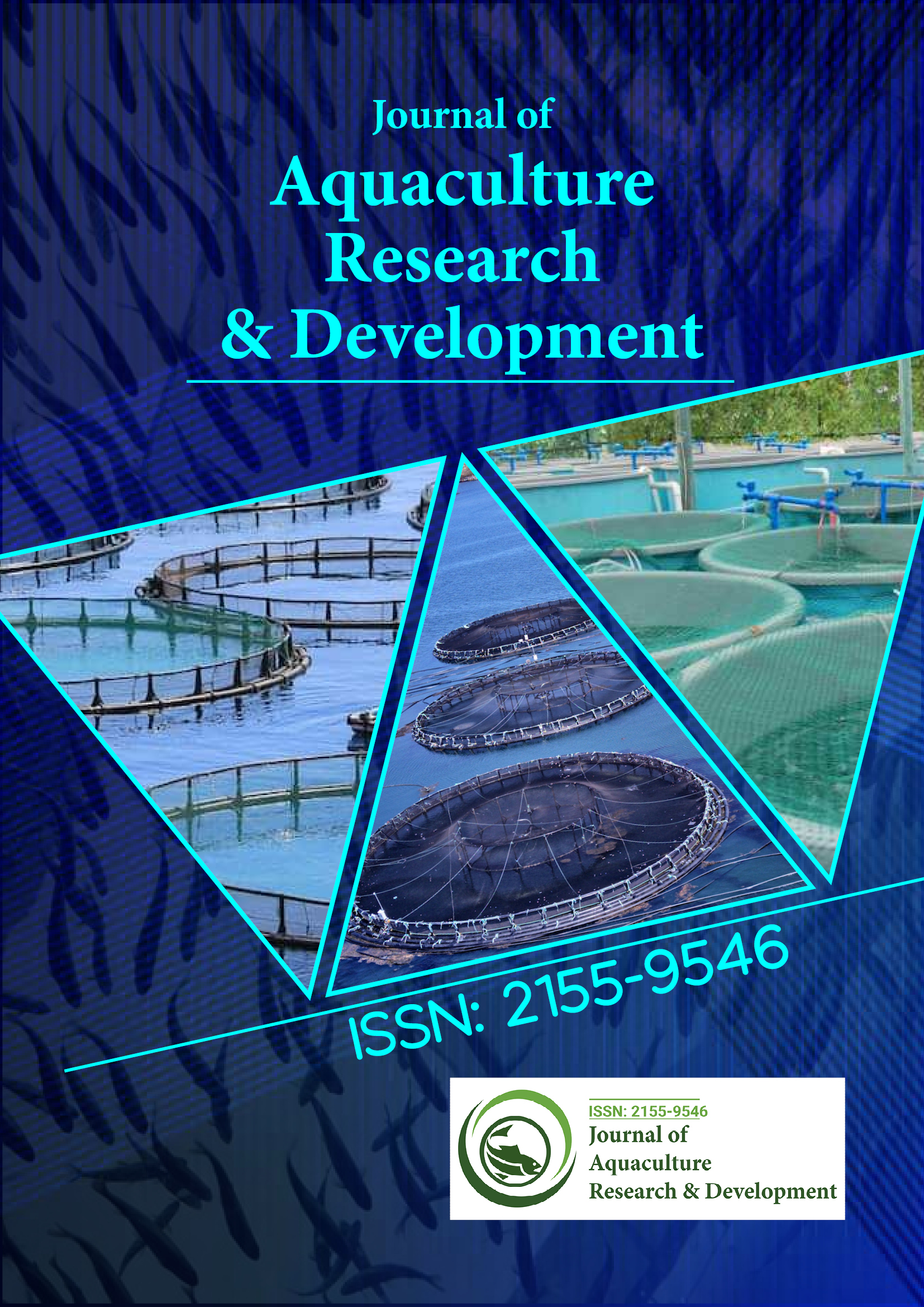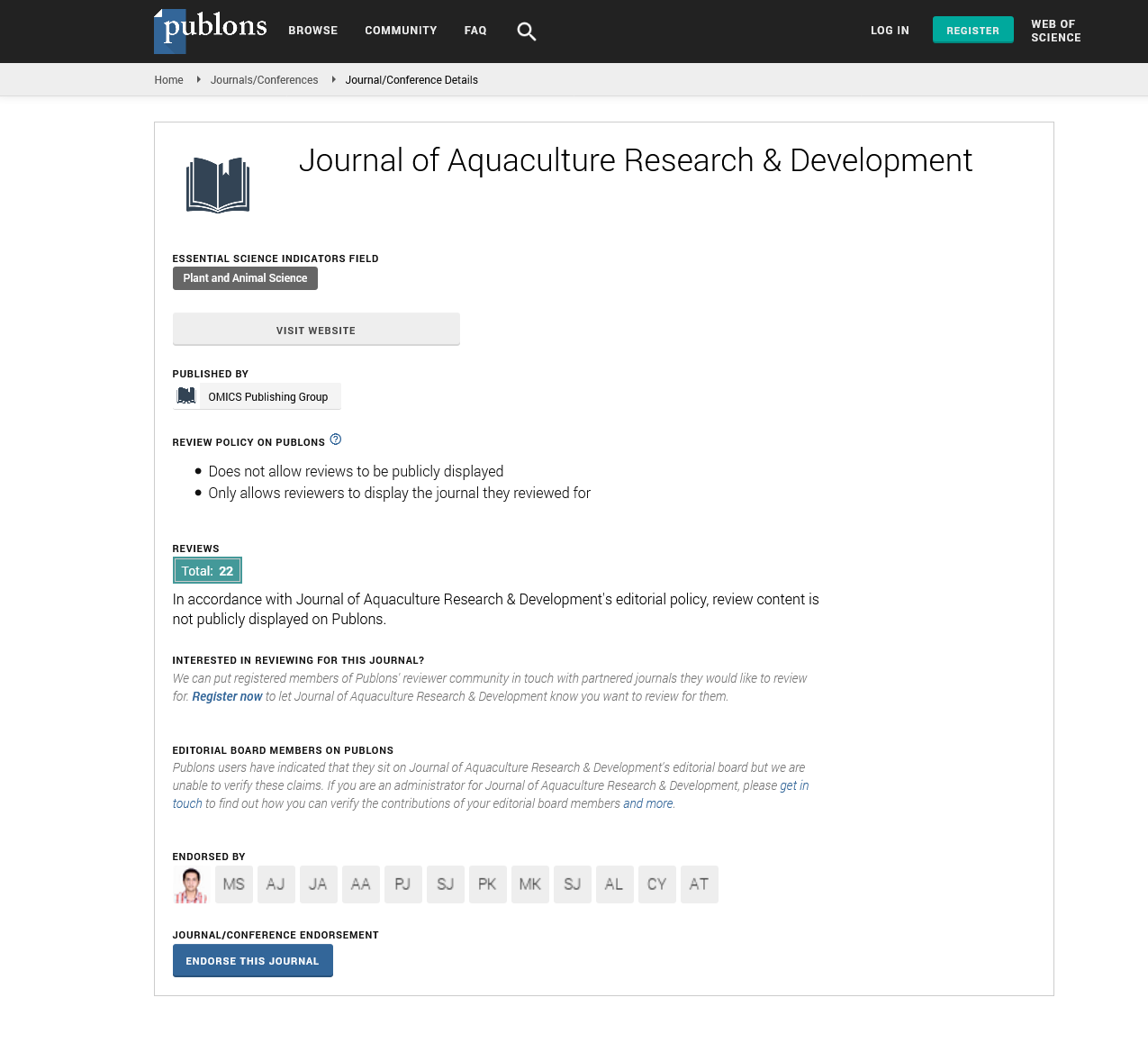Indexed In
- Online Access to Research in the Environment (OARE)
- Open J Gate
- Genamics JournalSeek
- JournalTOCs
- Scimago
- Ulrich's Periodicals Directory
- Access to Global Online Research in Agriculture (AGORA)
- Electronic Journals Library
- Centre for Agriculture and Biosciences International (CABI)
- RefSeek
- Directory of Research Journal Indexing (DRJI)
- Hamdard University
- EBSCO A-Z
- OCLC- WorldCat
- Scholarsteer
- SWB online catalog
- Virtual Library of Biology (vifabio)
- Publons
- MIAR
- University Grants Commission
- Euro Pub
- Google Scholar
Useful Links
Share This Page
Journal Flyer

Open Access Journals
- Agri and Aquaculture
- Biochemistry
- Bioinformatics & Systems Biology
- Business & Management
- Chemistry
- Clinical Sciences
- Engineering
- Food & Nutrition
- General Science
- Genetics & Molecular Biology
- Immunology & Microbiology
- Medical Sciences
- Neuroscience & Psychology
- Nursing & Health Care
- Pharmaceutical Sciences
Commentary - (2024) Volume 15, Issue 6
The Practice of Rustic Aquaculture and its Methods, Benefits
Hhabna Bamoudi*Received: 20-May-2024, Manuscript No. JARD-24-26145; Editor assigned: 22-May-2024, Pre QC No. JARD-24-26145 (PQ); Reviewed: 05-Jun-2024, QC No. JARD-24-26145; Revised: 12-Jun-2024, Manuscript No. JARD-24-26145 (R); Published: 19-Jun-2024, DOI: 10.35248/2155-9546.24.15.884
Description
Rustic aquaculture, often referred to as traditional or artisanal aquaculture, involves the cultivation of aquatic species in a natural or semi-natural environment using low-input, lowintensity methods. This form of aquaculture is prevalent in rural areas across the globe, including regions in Asia, Africa, and Latin America. It typically relies on simple technology and a deep understanding of local ecosystems, making it accessible to small-scale farmers. This article delves into the practices, benefits, and challenges associated with rustic aquaculture, highlighting its role in sustainable development and food security.
Rustic aquaculture employs various methods that reflect the ingenuity and resourcefulness of traditional farming communities. This is one of the most widespread forms of rustic aquaculture. Farmers construct ponds using local materials such as earth and stones. These ponds are typically filled with rainwater, river water, or groundwater. Species such as tilapia, catfish, and carp are commonly cultivated in these ponds. Pond culture allows for the controlled breeding, rearing, and harvesting of fish, providing a steady supply of protein for rural communities. This integrated approach combines rice cultivation with fish farming. During the rice-growing season, fish are introduced into flooded rice paddies. The fish help control pests by feeding on insects and weeds, while their waste provides nutrients for the rice plants. After the rice is harvested, the fish can be collected and sold or consumed. This method enhances land use efficiency and supports biodiversity. In areas with access to natural water bodies such as rivers, lakes, or coastal lagoons, rustic aquaculture often involves the use of cages. These cages are constructed from locally available materials like bamboo and nets. Fish are reared in these cages, which are anchored in the water. This method allows farmers to utilize natural water resources without significant alterations to the environment. Similar to cage culture, pen culture involves the use of enclosures to raise fish. However, pens are typically larger and cover a broader area of the water body. They are often used in coastal regions to cultivate species like milkfish and mullet. Pen culture enables farmers to manage fish populations while taking advantage of the natural productivity of the ecosystem.
While more commonly associated with modern sustainable farming, aquaponics has roots in traditional practices. This system combines aquaculture with hydroponics, where fish waste provides nutrients for plants grown in water. The plants, in turn, help filter and clean the water for the fish. This closed-loop system maximizes resource use and can be adapted to various scales, from backyard setups to community projects. Rustic aquaculture offers numerous benefits, particularly for small-scale farmers and rural communities. These benefits extend beyond food production to encompass economic, environmental, and social dimensions. Rustic aquaculture contributes significantly to food security by providing a reliable source of protein and other essential nutrients. Fish and other aquatic species cultivated through these methods are vital components of the diets of many rural populations.
The accessibility and affordability of rustic aquaculture make it an important strategy for addressing malnutrition and hunger. Small-scale aquaculture provides economic opportunities for rural households. It creates livelihoods through fish farming, processing, and marketing. By selling surplus produce in local markets, farmers can generate additional income, which can be reinvested in their farms or used to improve living standards. This economic empowerment helps reduce poverty and enhances community resilience. Rustic aquaculture practices are inherently sustainable, as they often mimic natural processes and utilize local resources efficiently. For example, rice-fish farming reduces the need for chemical inputs, while integrated systems like aquaponics minimize waste and resource use. These practices help maintain ecological balance, conserve biodiversity, and protect water resources. Rustic aquaculture is deeply rooted in the cultural traditions of many communities. It preserves traditional knowledge and practices, fostering a sense of identity and continuity. By maintaining these practices, communities can celebrate their heritage and pass on valuable skills to future generations. Many rustic aquaculture systems support diverse species and promote ecological interactions. For instance, integrated systems like rice-fish farming create habitats for various aquatic organisms, enhancing overall biodiversity. By conserving local species and ecosystems, rustic aquaculture contributes to broader conservation efforts.
Citation: Bamoudi H (2024) The Practice of Rustic Aquaculture and its Methods, Benefits. J Aquac Res Dev. 15:884.
Copyright: © 2024 Bamoudi H. This is an open-access article distributed under the terms of the Creative Commons Attribution License, which permits unrestricted use, distribution, and reproduction in any medium, provided the original author and source are credited.

